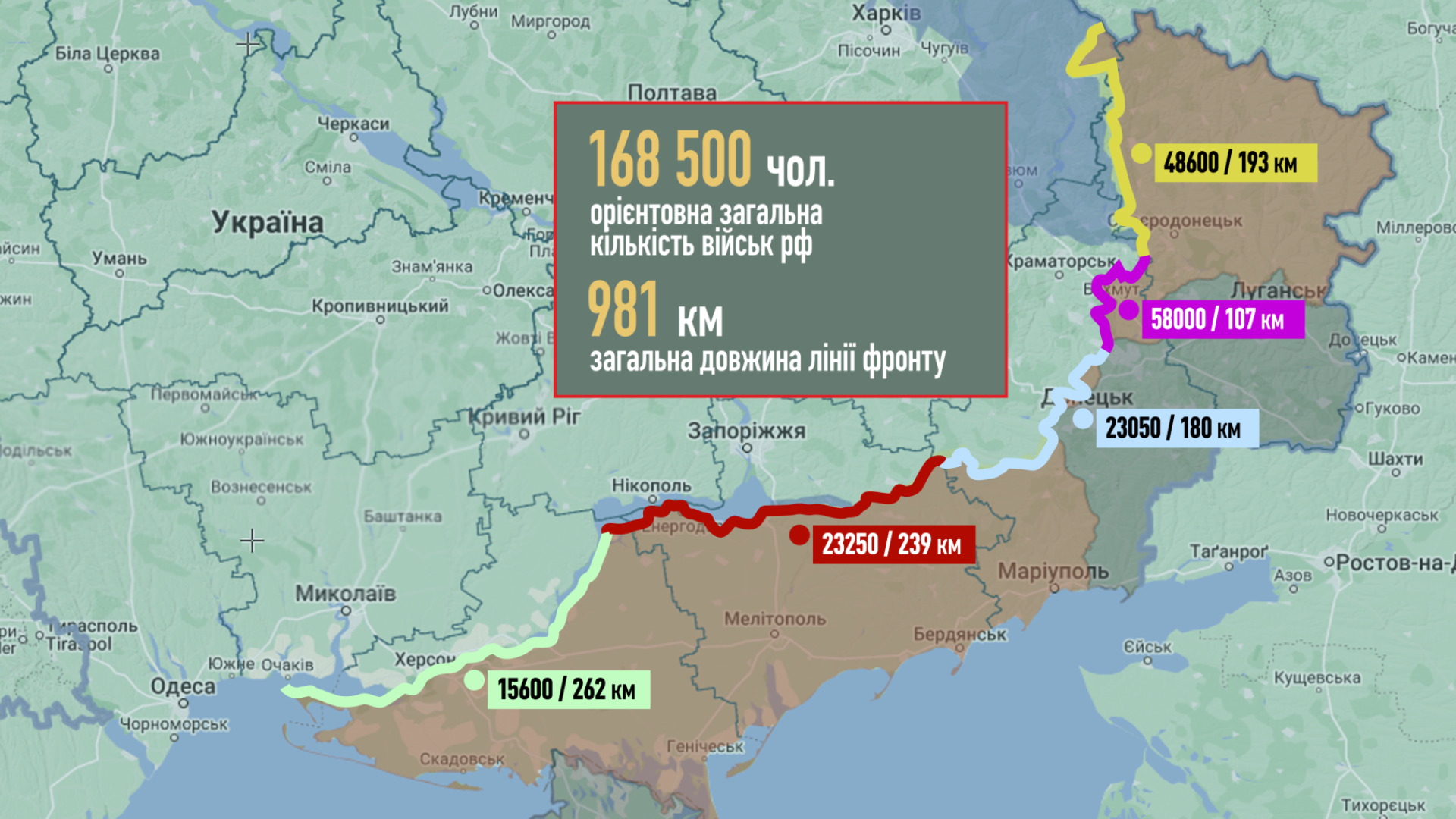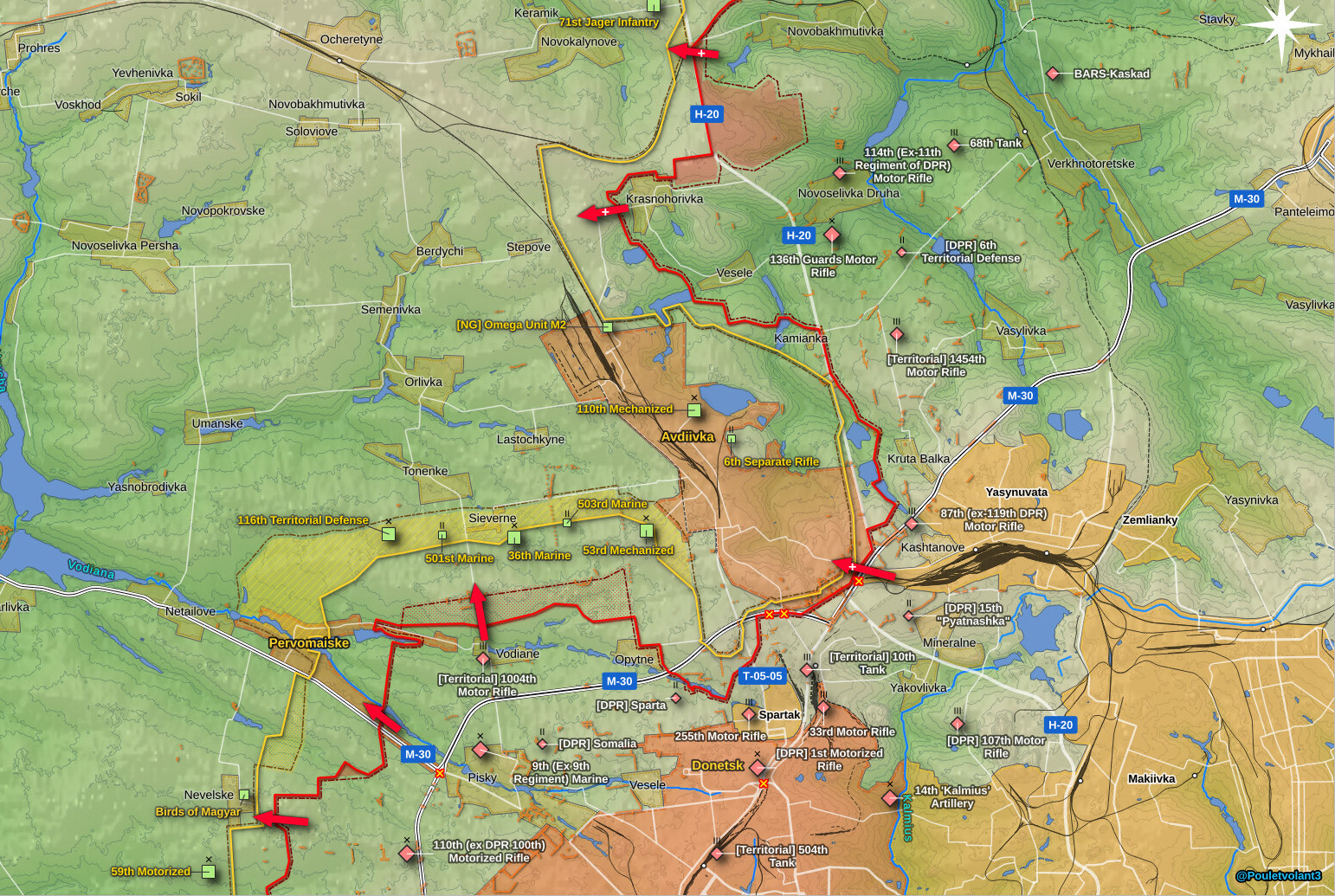
Number and concentration of Russian troops in Ukraine. Military expert Serhiy Zgurets
Taking leaked Pentagon data as a basis and creating our own infographic allows us to make certain assessments regarding the Russian forces present in Ukraine
The number of Russian Forces in Ukraine
What is the current number of Russian forces in Ukraine? We based our assessment on data leaked from the Pentagon and created our own infographic, which allows us to make certain evaluations about the Russian forces in Ukraine.

These data cover the period from February to March, when the Russian Federation began the second major offensive on Donbas. The offensive started in five directions: Lyman, Bakhmut, Avdiivka, Marinka, and Vuhledar. At that time, the enemy's strategy was to advance in all five directions, achieve some success somewhere, and then attempt to break through Ukraine's defense. However, it failed. Nevertheless, let us look at these numbers from the period when the enemy began its advertised offensive.
On the left bank of the Kherson region, in the south, with a length of 262 km, there are 15,600 Russian servicemen. In Zaporizhzhia, part of which is still under enemy control, and where the length is 239 km, there are 23,250 Russian troops. These figures, even up to ten servicemen, raise doubts, but they were also submitted to the head of the Committee of the Chiefs of Staff, General Milley. The US army used these figures to assess the potential of the Russians in the territories temporarily occupied by the enemy.
I would group the figures for the regions of Donetsk and Luhansk together because the hottest directions from Bilohorivka to Vuhledar are Bakhmut, Avdiivka, and Marinka. The largest grouping of Russian forces, over 80,000 personnel, is concentrated over a length of 290 km. There is also a section in the north where the concentration of Russian troops is very high: from Bilohorivka through Kreminna, Svatove, and north to Kupyansk and to the borders with Russia. There are 48,600 Russian military personnel stationed there. We mention this area less, but we understand how much enemy power is concentrated there.
In addition to these figures, in January 2023, Kyrylo Budanov, the chief of military intelligence, gave a large interview to The Washington Post, stating that there are 325,000 Russian troops in Ukraine. The difference between the Pentagon's figures and Budanov's is about 157,000. This means that either the calculations are different, or the Pentagon takes into account only combat units, whereas the main intelligence agency counts all military units, including those that perform support functions.
The main conclusion is that despite having such a large number of personnel, the enemy has not managed to achieve any success on the battlefield for two months. The enemy is trying to find a way out of this situation and continues to increase the number of personnel, but quantity does not mean quality. We are in a period where we understand that the enemy is exhausted, although the hottest events are taking place in some areas of the front.
Avdiivka direction
According to Valery Prozapas, a captain in the Armed Forces of Ukraine, the enemy has been engaging in permanent actions since last year, with varying degrees of intensity. However, there have been no significant changes in the enemy's efforts to attack, nor have they made any attempts to enter the operational space and surround Avdiivka. The Ukrainian army also avoids storming fortified urban settlements occupied by Russian troops since 2014. As a result, there has been an operational impasse for many months, with both sides engaging in classic positional warfare without breakthroughs.

Prozapas cautions against underestimating the enemy, as the Russians are adapting their strategies based on their unsuccessful actions of the past months. They are reinforcing their air reconnaissance, electronic warfare, and firepower capabilities. Nonetheless, the Ukrainian armed forces are continually evolving and remain half a step ahead of the Russians. The primary advantage of the enemy is their numerical superiority, and they have demonstrated a disregard for the well-being of their personnel. Despite their losses, the Russians still have combat-capable units. The solution to this challenge is a consistent modernization of the Ukrainian armed forces and the transition of the entire Ukrainian society to military readiness.
MiG-29 to Ukraine
Let's move on to another topic that is currently being actively discussed - the transfer of MiG-29 fighters from Slovakia. The Slovak Minister of Defense noted that it was a complex logistical project.
Oleg Katkov, editor-in-chief of Defense Express, said that Ukraine has officially received 13 MiG-29 AS fighters according to reports from the Ministry of Defense of Slovakia. The modernization of the AS is extremely important. Slovakia received the fighter jets from Russia in the mid-90s, so the planes are new. To be honest, they are the newest in the Ukrainian Air Force, which has not received a single fighter since 1991. The second aspect is that these machines underwent modernization in the mid-2000s with the participation of British and American companies, but this modernization did not give them the capability to use Western high-precision weapons, such as air-to-air missiles and others. However, these fighters are equipped with an onboard computer and multifunctional displays. Only four machines were able to fly on their own because, a week before the handover, Ukrainian specialists arrived with spare parts and brought the planes to a state of flight readiness. All the others had to be transported by land, which is a non-standard procedure for the transportation of aircraft.
Oleg Katkov noted that the total transfer of MiGs from Slovakia and Poland will be 27 machines, 13 from Slovakia and 14 from Poland. Not all will fly, perhaps some of them will become spare parts donors given their technical condition. Poland wanted to write off these fighters back in 2012, and only because they did not order more F-16s, this process was delayed, so the planes remained. Polish fighters did not undergo any modernization at all and had a rather small flight resource.
The editor-in-chief of Defense Express explained that the MiG-29 AC remains a Soviet machine with an appropriate level of electronic base. Replacing all the electronic equipment is a matter of about $40 million per aircraft, which means modernizing an aircraft that is well over 30 years old. However, with such funds, it would be possible to buy two used F-16 fighters by 2022.
Katkov said that Denmark, Belgium, and the Netherlands are switching to the F-35, and accordingly, they are decommissioning the F-16. But here a lot will depend on the USA, which must give permission for the transfer of F-16s to Ukraine.
We are waiting for the next Ramstein meeting and understand that, in addition to the ammunition component, the aviation issue will also be raised. It will be another serious push for the Ukrainian army to obtain the fighter jets they need on the battlefield as soon as possible.
- News













































